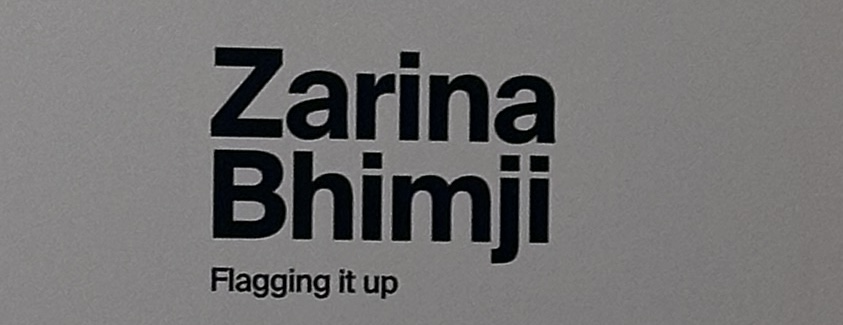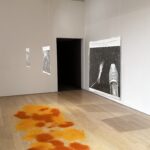Exploring the Role of SVAOs in Contemporary Art
Through last week’s study, I have gained a certain understanding of the role and characteristics of the curator, in last Wednesday’s seminar, I also learned about the different experiences of visiting exhibitions of the students in the group, so I learned something I hadn’t known before, and we all come from different majors have their specialty, which makes me full of interest in the next study life.
At the same time, I visited Zarina Bhimji’s exhibition ‘Flagging it Up’ at the Edinburgh fruitmarket, for me, this exhibition was visually stunning, her work is born of observation and feeling, rooted in careful use of color and light. It contains lapses and ambiguities, its rhythms, contexts, and moods are evocative rather than descriptive or documentary. Zarina Bhimj’s father is Indian, so India and East Africa are repeat locations for her forays into local archaeology. I also see elements with Indian overtones in her artwork. Bhimji is driven by the ability of art to recreate an experience in the mind of the viewer, and I believe that this is something she has done, by viewing her visual artwork it does give one the feeling of being in the dust.
https://www.fruitmarket.co.uk/exhibition-zarina-bhimjiflagging-it-up/

Moreover, by learning the characteristics of SVAO, I think the fruitmarket is a typical SVAO, first of all, the exhibition is free and dedicated to the dissemination of art. At the same time, Bhimji wants to build a bridge through her work by speaking directly to the audience.
In the preview assignment, I learned about the role that visual arts play in curation, showing four interpretations related to contemporary art.
Modified:
Independent Research:
In the history of exhibition production of contemporary art, SAVOs presents a curatorial model that is different from that of large-scale biennials and ‘White Cube’ Spaces. These smaller organizations provide a more relaxed atmosphere that promotes a more direct interaction between art and the audience (Bilbao, 2018). O’Neill (2012) points out that a curator-centric discourse is emerging that effectively advocates and empowers new independent curatorial practices, thereby changing the curatorial landscape of contemporary art.
I had the pleasure of visiting Zarina Bhimji’s exhibition “Flagging it Up” at the Edinburgh Fruitmarket. Bhimji’s work presents a visual shock based on observation and feeling through the careful use of color and light. As O’Neill (2012) emphasizes in the Culture of Curation and the Curation of Culture, the curatorial practice of contemporary art has gone beyond simple exhibition production to involve a broader set of cultural practices. Bhimji’s work, with its unique use of color and light effects, embodies this trend in contemporary art to seek depth perception and emotional resonance.[Edited with 10 March 2024 ]
References:
Bilbao Yarto, A. E. (2018) Micro-Curating : The Role of SVAOs (Small Visual Arts Organisations) in the History of Exhibition-Making.
O\’Neill, P. (2012) The culture of curating and the curating of culture(s) / Paul O’Neill. Cambridge, Mass. ; The MIT Press.
The Fruitmarket Gallery. (n.d.). Zarina Bhimji: Flagging it Up [online]. Available at: https://www.fruitmarket.co.uk/exhibition-zarina-bhimjiflagging-it-up/ (Accessed at:22 January, 2024)




Leave a Reply